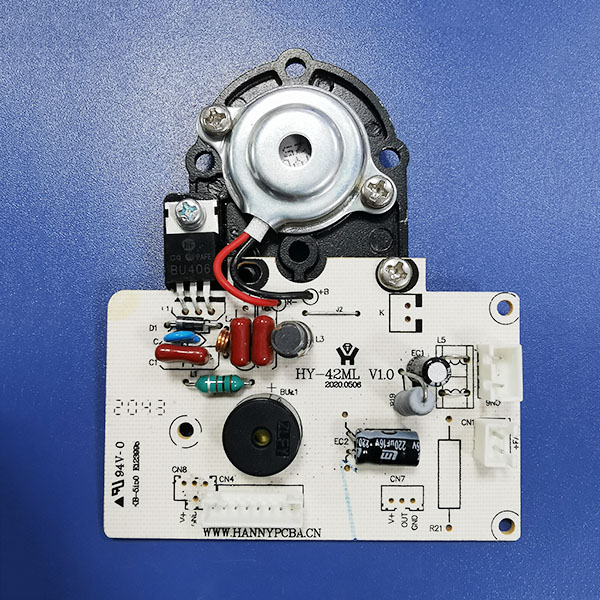Humidifiers are common appliances in modern homes and offices. However, after using them for a period of time, you may find that the amount of mist produced decreases, the noise increases, and even white or yellowish-brown powder appears on the base. This usually means that scale has formed on its core component - the ultrasonic atomization plate. Understanding the reasons and mastering the correct cleaning and maintenance methods can not only restore the performance of the humidifier but also extend its service life.
I. Main Causes of Scaling
The main component of scale is the precipitation of insoluble minerals such as calcium carbonate and magnesium carbonate formed by the evaporation and oscillation of calcium and magnesium ions in water.
Water quality issue (root cause) :
Use tap water: Tap water is rich in minerals (commonly known as "hard water"). When the ultrasonic atomization plate vibrates at high frequency, these minerals cannot be atomized and will continuously accumulate on the surface and around the atomization plate, forming hard scale.
The "white powder" phenomenon: The white powder you see floating in the air and on the surface of objects is precisely these minerals carried out by water mist.
Long-term use
Even if purified water is used, after long-term operation, the trace minerals in the water will be concentrated due to water evaporation and eventually form scale.
Lack of regular cleaning
If the water tank and the base are not cleaned regularly, the remaining water will continue to evaporate, accelerating the formation and accumulation of scale.
The hazards of scale:
Reduced atomization efficiency: Scale covers the surface of the atomization plate, hindering its high-frequency vibration, resulting in a significant decrease in the amount of mist output.
Increased energy consumption and noise: The atomization plate requires more power to operate, resulting in increased energy consumption and possibly generating unpleasant "buzzing" or "clicking" sounds.
Damage to the atomization plate: Severe scale can cause local overheating of the atomization plate, which may eventually lead to its rupture or burnout.

Polluting the air: Scale powder is sprayed out along with water mist, which may have a potential impact on the human respiratory tract.
Ii. Cleaning and Maintenance Guide
(1) Required tools and materials
White vinegar or citric acid (food grade, more recommended)
Soft-bristled brush/old toothbrush
Cotton swab
Clear water
A soft cloth
(2) Cleaning Steps (Taking citric acid as an example, the method for white vinegar is similar)
The first step: Safety preparation
Disconnect the power supply: Be sure to unplug the humidifier.
Empty the water tank: Pour out all the remaining water in the water tank and the inner tank.
Step 2: Disassembly and initial cleaning
Separate the water tank from the base.
Remove all detachable parts, such as the water tank cover, water trough, etc.
Rinse initially with clean water to remove the surface dirt and impurities.
Step 3: Core descaling (Soaking method)
To prepare the descaling solution: Pour warm water (about 40-50℃ for better results) into a container, and then add citric acid powder or white vinegar. The ratio is approximately: 10 to 15 grams of citric acid (or an equal proportion of white vinegar) for every 500 milliliters of water. Stir well.
Soak the atomization plate area: Place the base of the humidifier (ensuring that the circuit part does not come into contact with the liquid) or the entire washable part into the descaling solution, making sure the water level completely submerges the scaled atomization plate.
Standing reaction: Soak for 30 to 60 minutes. You will see that the scale undergoes a chemical reaction with the acid, generating a large number of bubbles, and the scale gradually dissolves and peels off.
Note: Do not directly scratch the surface of the atomizing disc with hard objects (such as blades or screwdrivers). The ceramic coating on its surface is very fragile. Once scratched, it will be permanently damaged.
Step 4: Detail cleaning
After soaking, remove the base.
Gently scrub the surface of the atomizing plate and the surrounding corners with a soft-bristled brush or an old toothbrush to remove any loose scale or residue.
For small crevices, a cotton swab can be used for cleaning.
Rinse thoroughly with clean water again to ensure there is no acid or scale residue left.
Step 5: Dry and assemble
Dry all the components with a soft dry cloth, especially around the circuit interfaces.
Place the cleaned parts in a well-ventilated area to dry completely.
After confirming that all components are dry, reassemble the humidifier.
Iii. Daily Maintenance Suggestions for Preventing Scaling
Prevention is far better than cure. It is of vital importance to develop good usage habits.
Use the correct water quality
First choice: Purified water or distilled water. It contains almost no minerals, eliminating scale and "white powder" from the root.
Second choice: Water filtered through a water filter kettle or RO reverse osmosis water purifier.
Try to avoid: using tap water directly.
Change water daily
Even if pure water is used, it is recommended to change the water every day to avoid the growth of microorganisms in the water.
Weekly simple cleaning
Rinse the water tank and the base with clean water once a week to prevent the formation of microbial films.
Monthly deep descaling
Even if no obvious scale is seen, it is recommended to carry out preventive cleaning with citric acid or white vinegar once a month.
When not in use for a long time
Drain all the water from the humidifier completely, dry it with a dry cloth, and then store it in a dry place.
Summary
The atomizing plate is the "heart" of a humidifier. Only by treating it well can the humidifier reward you with fresh and healthy moist air. Remember the three core points: use pure water, change the water frequently, and acid wash regularly. Then your humidifier can work stably for a long time.
About
Company Profile Corporate imageApplication CasesProduct
News
Company News Industry News Common problem+86 769-81555631-808
Monday to Sunday 8:30-21:30
(Welcome to call us for consultation)
 App
App